Our first landfall was in the South Shetland Islands, which are still some sailing distance from the actual Antarctic Peninsula mainland. We anchored at tiny Half Moon Island in Moon Bay. Moon Bay is part of a much larger island called Livingston Island. From the map this bay seems to be a well-protected area. We were about to learn an important lesson about Antarctic weather…
Having already been briefed by Frode, our kayak guide, on how to prep and how to load into the kayaks from the Professor Molchanov, we made fairly quick work of getting into the boats. Russian crew members staged us from a Zodiac, steadying the boats one-by-one and allowing us to enter the cockpits from the side of the Zodiacs. I forget the order, but I think Frode was first, then Sarah, then me, then Pat and Phil in the double, and finally Kate in a single.
During the loading, there was almost no wind. By the time all the boats were in the water (maybe 10 minutes?), the winds had risen to perhaps 30 knots, with even greater gusts. The wind suddenly the strongest I’ve ever paddled in. Each boat became absorbed in just staying upright and not flipping over. Unknown to me, Sarah had already flipped into the polar drink, and was plucked out by the Russian crew member piloting the Zodiac, which was bobbing around, watching over us. Immediately Frode called for us to abort, and we all struggled to return to the Prof M.
Turns out that Sarah lost her camera, and one of her Wellington boots (Wellingtons, or similar are required wear on the expedition cruise for Zodiac landings, as we often step from the Zodiac into shallow water.) Later, some of the kayakers groused a little and were somewhat resentful regarding our instructor’s judgement. For my part, I just chalked it up to the crazy Antarctic environment and it seemed like part of the adventure to me…
We immediately went to plan B: run over to shore in the Zodiacs with everyone else.
This small island had a lot of penguins (3 types! Chinstraps, Gentoos and a lone Adelie), and seals, too. We just tramped around a little (only small deposits of snow), taking pix of penguins. Because the island is surrounded by another island, there are lots of glacier-covered mountains to look at. The weather changed a couple of times, very rapidly. I was standing talking to someone when the wind suddenly gusted from zero to maybe 40mph. We almost fell over.
Our second stop of the day was Deception Island. It’s a pretty desolate place. The sea fills a great caldera at the center of the (formerly) volcanic island through a narrow entry. The navigation is somewhat hazardous because of a submerged ship sinker called “Ravn Rock.” Deception Island used to be a whaling station, then a sealing station. We anchored near “Whaler’s Bay.” There is a ton of old whaling equipment rusting on the beach. There turned out to be a lot of wildlife, though we were told on board the Prof M to expect not much wildlife at this stop. We saw a leopard seal lolling on the beach, some chinstraps & Gentoos, terns dive-bombing us as we accidently walked through their nesting sites, various petrals, and a Wedell seal. Our activity was hiking up and down beach (Frode cancelled kayaking on account of high winds). At one end of Whaler’s Bay is “Neptune’s window”, a natural opening in the steep caldera rock walls that you can climb and get an outside view of the sea beyond Deception Island. Climbers were rewarded with the site of an ice-encased Trinity Island (I think.) Natalia, wearing a foam pad strapped to her butt so she could sit anywhere, sat at the edge of a precipice at Neptune’s Window (with a vertical drop of perhaps 100 meters.) I had to move away from her, because it made me very nervous to watch her move around the precipice so casually.
At the end of the landing, Natalia insisted on digging a hole in the geothermal beach sands and soaking in the resulting warm water. This is a tourist tradition which is now somewhat discouraged, because it involves shoveling a big hole in the beach. It’s not a big deal when the number of passengers is low, because the tide simply washes out the pit that gets dug. Natalia brought a shovel from the Prof. M. She was joined by Patrick the Aussie kayaker, and Kathryn, a young Canadian woman. The younger crowd and kayakers gave me a hard time, because I declined to join in. I thought about it, but the overhead seemed high. Piling up clothes on the beach in Antarctic winds to sit in a muddy shallow warm water pit that smells of sulfer while the other 40 tourists look on. I think saying I had done it would be 95% of the fun, though getting semi-naked with the two charming young women would have provided a little frission…
After Zodiacing back on board: the Prof. M hotel staff had chocolate rum drink for us all…
Evening sailing brings us back to lots of rolling and pitching of the Professor Molchanov as we move through the Branford Strait. We’ve got 10 hours of sailing to get to Ronge Island and Errera Channel. Passengers are getting a bit green again, but I’m fine. We have beautiful weather after another nice dinner. I sit in the bar with the increasingly loose staff, Anjali the biologist, Delphine the expedition leader. As groups of us chat, Trinity Island float by at 10 PM, with Alpine-glow-like sun illuminating huge ice bergs. Very beautiful. Albatross and other seabirds are skimming inches over the seas outside the ship, as islands and majestic glaciers drift by. I sit with Julie the Scottish conservationist, Patrick the Melborne-ite kayakers (who gets enormous credit for being very green much of the trip, but rising repeatedly to the occasion – and being the only guy to get in the thermally heated dugout at Deception Island.) Pat shows up to every meal, even if the meal for him consists only of lying down on the back seats of the dining hall and staring at the ceiling while us lucky ones chow down.
Tuesday, December 16, 2008
Subscribe to:
Post Comments (Atom)


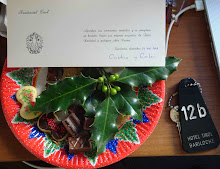














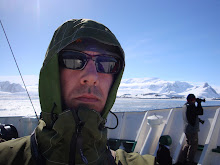




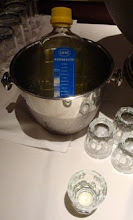
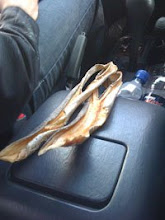








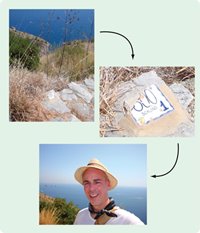




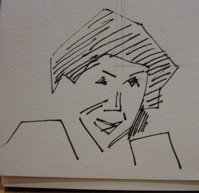
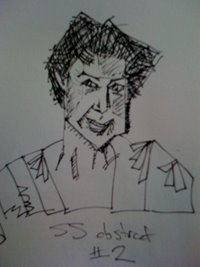








No comments:
Post a Comment